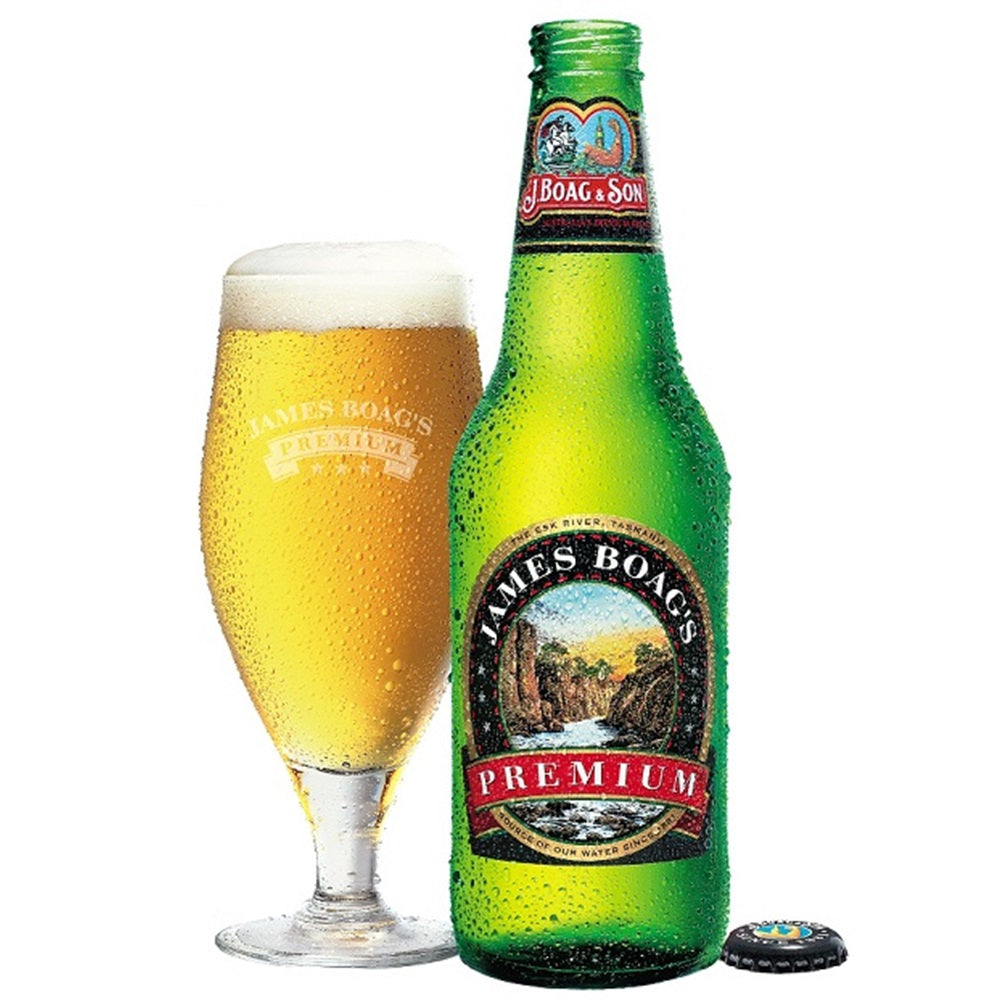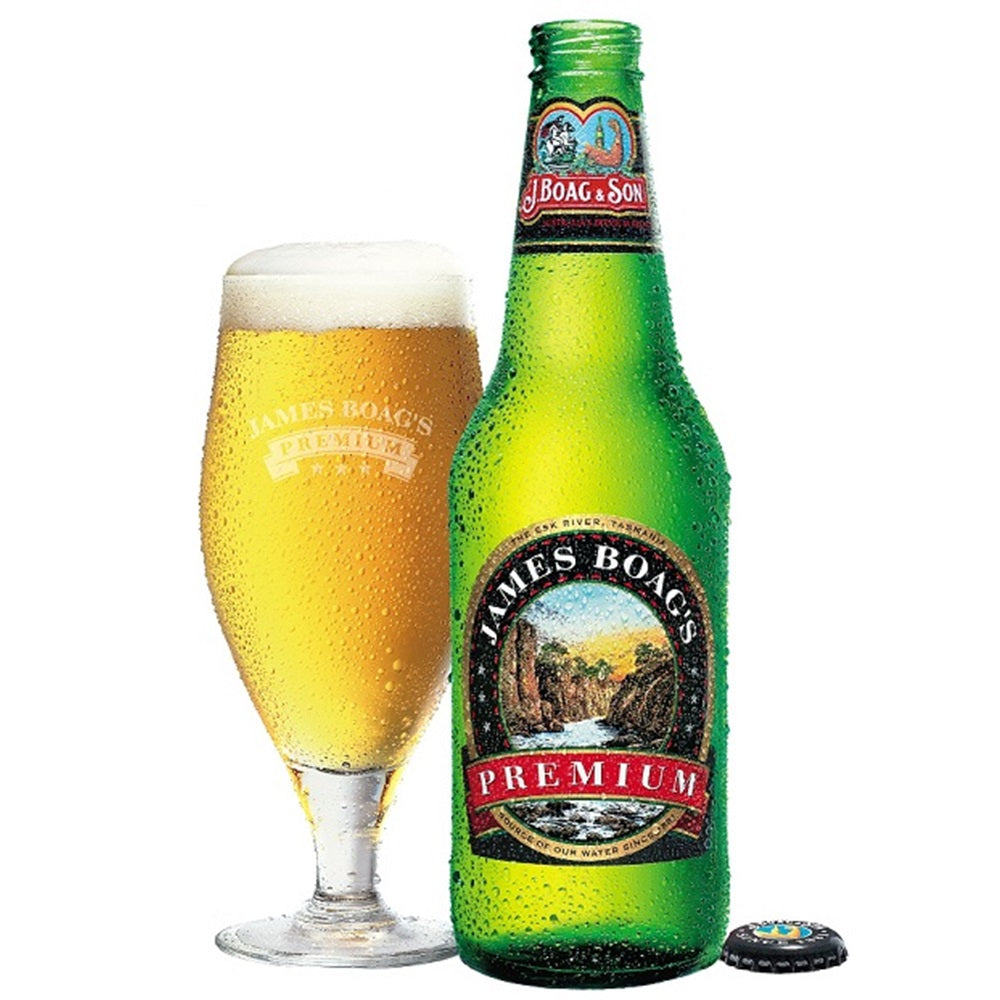Suggested videos
- Sku: 12908
- Barcode:
BOAGS PREMIUM LAGER RECIPE KIT
Download Information$39.95 AUD
Tax included.
Shipping calculated at checkout.
In stock!
Boags Premium Lager - Coopers Recipe Kit
Extract Brewing Instructions
Introduction
- Welcome to the world of brewing!
- This guide will go through all the steps required to create great beer at home including equipment required, the process during brew day and some helpful hints and tips. The first thing to do before you brew is make sure that you have all the ingredients you need for the recipe. If you are brewing one of our kits, we can replace any of the parts before you start but not once you have started.
Equipment
- There are a number of different setups that can be used for brewing from relatively basic to infinitely customised and complicated. Below is a list of the basic equipment that will be needed to brew a batch of extract beer. All the equipment used for extract brewing can be used for all grain brewing too so it is a good investment if you plan to continue your brewing journey.
The basic equipment required is:
- Fermenter with airlock and tap
- Hydrometer with test jar
- Spoon
- Cleaning and sanitising chemicals
- Muslin bags for hops and steeped malts
- Spray bottle for sanitiser
If bottling:
- Clean bottles
- Crown seals
- Capper
- Bottle filler
- Cleaning and sanitation
- Before brewing, all equipment that comes into contact with the beer will need to be thoroughly cleaned and sanitised (including fermenter, spoons, thermometers, and airlock).
- PBW is a great product for general cleaning and removal of debris and a sanitation product like StarSan or No Rinse Sanitiser will remove any bacteria left after cleaning to ensure a clean environment for fermentation. It is a good idea to have a spray bottle full of sanitiser on hand for use on spoons etc during the brewing process.
Getting started
- Once all of the equipment you are going to use is fully cleaned and sanitised it is time to get started!
- Begin by placing the can of extract in hot water to soften the malt, making it easier to work with. Then open the can (ensuring to spray the top with sanitiser beforehand) and pour into the fermenter. Add the additional malt as per the recipe and 2 litres of hot water. Stir well making sure it is all well dissolved.
Adding grain (partial mash)
- If grain is included in the recipe either mill it or crack it with a rolling pin. Put the grain in a muslin bag and steep in hot water (around 65-75°C) for 20 minutes.
- Pour the liquid (not including the grain) into the fermenter.
Adding hops
If finishing hops are included
- follow instructions on the pouch.
If hop pellets are included
- Add 2 litres of water to a saucepan and bring to a boil. Add hop pellets and boil for 1 minute only. Turn off the heat and leave in the saucepan for 15 minutes. Strain only hops into the fermenter.
If dry hopping
- Add the hops directly to the fermenter on day 5 of fermentation. You don’t want the dry hops to be in contact with the beer for any longer than a week.
If adding additional ingredients like orange peel, coriander, essence etc
- Add on day 2 of fermentation.
Beer Volume and Fermentation
- Now that the malt extract, dry ingredients, and any hops have been added to the fermenter, add enough cold water to reach a volume of 23 litres. Take a sample from the fermenter and test using a hydrometer. This is the original gravity (O.G.) and will be used to calculate final ABV.
- Now is the time to pitch the yeast.
- If brewing with a lager yeast it must be pitched and fermented between 12-15°C.
- If brewing with an ale yeast it must be pitched and fermented between 18-24°C.
- If a dry enzyme is included, now is the time to add to the fermenter.
- Fermentation generally takes 10-14 days but will be finished when the hydrometer gravity reading is stable over 3 days.
ABV Calculation
- Once fermentation is finished and your hydrometer reading are stable over three days it is time to package your beer.
- To calculate the alcohol content the following equation can be used.
- ((Original Gravity) – (Final Gravity)) x 131 = ABV%
Yeast Health
- Depending on which yeast is being used there may be further steps required before the brew day begins. Typically for batches larger than 23 litres or 23 litre batches with an O.G. above 1.060 more than one pack of yeast is necessary so that there are enough yeast cells for healthy fermentation. A yeast starter is a helpful method for increasing the yeast cell count which involves pitching the yeast into a malt extract/water solution for 2 to 3 days to allow it to grow. An online yeast calculator is a useful resource for calculating how much yeast you will need.
Hints & Tips
There are a number of helpful apps and websites that can help you out. A few of the most popular ones are
- Brewfather
- BeerSmith
- Brewer’s Friend
- There is also a plethora of information online regarding the whole brewing process from building a brewing system to the science behind mashing at different temperatures.
For further information about brewing beer and some great recipes the following books are a great place to start
- How to Brew – John Palmer
- Designing Great Beers – Ray Daniels
- Clone Brews – Tess & Mark Szamutulski
- Brew Chem 101 – Lee W. Janson, Ph.D

BOAGS PREMIUM LAGER RECIPE KIT
$39.95 AUD


